Last Updated: Dec 12, 2019
Introduction
When you think of robotic vacuums, the name that comes to mind almost immediately is “Roomba.” In fact, when you talk about a robotic vacuum, you probably call it a Roomba, regardless of the brand or model. Roomba has been synonymous with robotic vacuums since the early 2000’s, when you could purchase one from your local Sharper Image store or mail order catalog. And, like every trend, when a product becomes popular, more people manufacture similar products.
Hoover, Dyson, and Samsung have all begun manufacturing robotic vacuums recently, and all are huge names in vacuum cleaners or consumer electronics. The second largest name in the robotic vacuum world, however, is Neato. Today, we will take a look at both Roomba and Neato to try and decide which robotic vacuum sucks, and which one vacuums.
This is a super in-depth, ultra-detailed comparison of the two brands, so below is the condensed version. For those who want all the details, continue reading past the table of contents.
If you don’t have time to read, just know this:
The Neato Botvac is better for you if cleaning power is more important to you and you don’t mind regularly performing maintenance and cleaning your robot vacuum.
The Roomba is better for you if you want to do the absolute minimum when it comes to maintenance.
Contents
- 1 Introduction
- 2 If you don’t have time to read, just know this:
- 3 Comparing Neato vs Roomba by Category
- 4 Navigation
- 5 Suction
- 6 Battery
- 7 Sound
- 8 Efficiency
- 9 Maintenance
- 10 Price
- 11 Households with Pets
- 12 Households with Kids
- 13 Large Homes
- 14 Carpet
- 15 Hardwood Floors with Area Rugs
- 16 iRobot
- 17 Neato Robotics
- 18 Conclusion
- 19 Comparing Specific Models: the Botvac D80 and D85 vs the Roomba 880
Comparing Neato vs Roomba by Category
[aawp table=”935″]Cleaning Pattern / Efficiency
All Neatos BotVacs and newer Roombas (model numbers starting with 9) have organized linear vacuuming. Cheaper Roombas have random cleaning paths resulting in longer cleaning times but just as good results. Tie.
Suction
Neato BotVacs have stronger suction. Neato BotVacs win suction power.
Battery
No meaningful difference in everyday use. Category not really relevant in daily use.
Sound
Neato BotVacs are almost as loud as traditional upright vacuums, Roombas are significantly quieter than that. Roombas win quietness.
Efficiency
Newer Roombas (models 9xx) and all Neatos BotVacs have linear vacuuming. Tie.
Maintenance
Roombas with rubber rollers (model numbers starting with 8 or 9) are easy to maintain. Hair rarely gets tangled in the rollers, and when they do, it is a trivial task to pull out. Roombas win maintenance.
Navigation
Roombas are great at navigating around your home–unless you have very dark or black carpet. The sensors on Roombas interprets black carpet as a cliff and won’t go near it. Neatos do not have this problem. If you have dark carpet/area rugs, Neato wins.
Price
At approximately 2/3rds the price of similarly featured Roombas, Neato BotVacs win price.
Households with Pets
Pets come with fur. Neato BotVacs pick up more hair, but their rotating brushes are a pain to clean hair out of. Same applies to people with long hair. Tie.
Households with Kids
Newer Roombas (models 8xx and 9xx) are slightly better in dealing with toys and other small objects on the ground due to their rubber rollers. Roombas win households with kids.
Large Homes
All Neato BotVacs and newer Roombas (models 9xx) have charge and resume. Tie.
Carpet
Roombas with rubber rollers fare better on carpet. Neato BotVacs sometimes have trouble moving on carpet with deep pile. Roombas win carpet.
Hardwood Floors with Area Rugs
Both brands are able to transition smoothly from hardwood to area rugs. Tie.
Summary
As you can see, a recurring theme is that Neato has equipped all of their BotVacs with features that iRobot reserved for their 800 and 900 series Roombas. Here’s the bottom line:
Neato BotVacs are equal or better in a lot of categories. The one fatal flaw holding us back from recommending them wholeheartedly is the chore of cleaning hair out of their rotating brushes. If you don’t mind having to pull hair out of your robot vacuum, Neato is the way to go. Click here to see the BotVac Connected D5 on Amazon.
If you want hands-off maintenance and the best darn robot vacuum available today, get a Roomba 960 or 980. We recommend the 960 because it’s cheaper than the 980 but still has all the important features. Click here to see the Roomba 960 on Amazon.
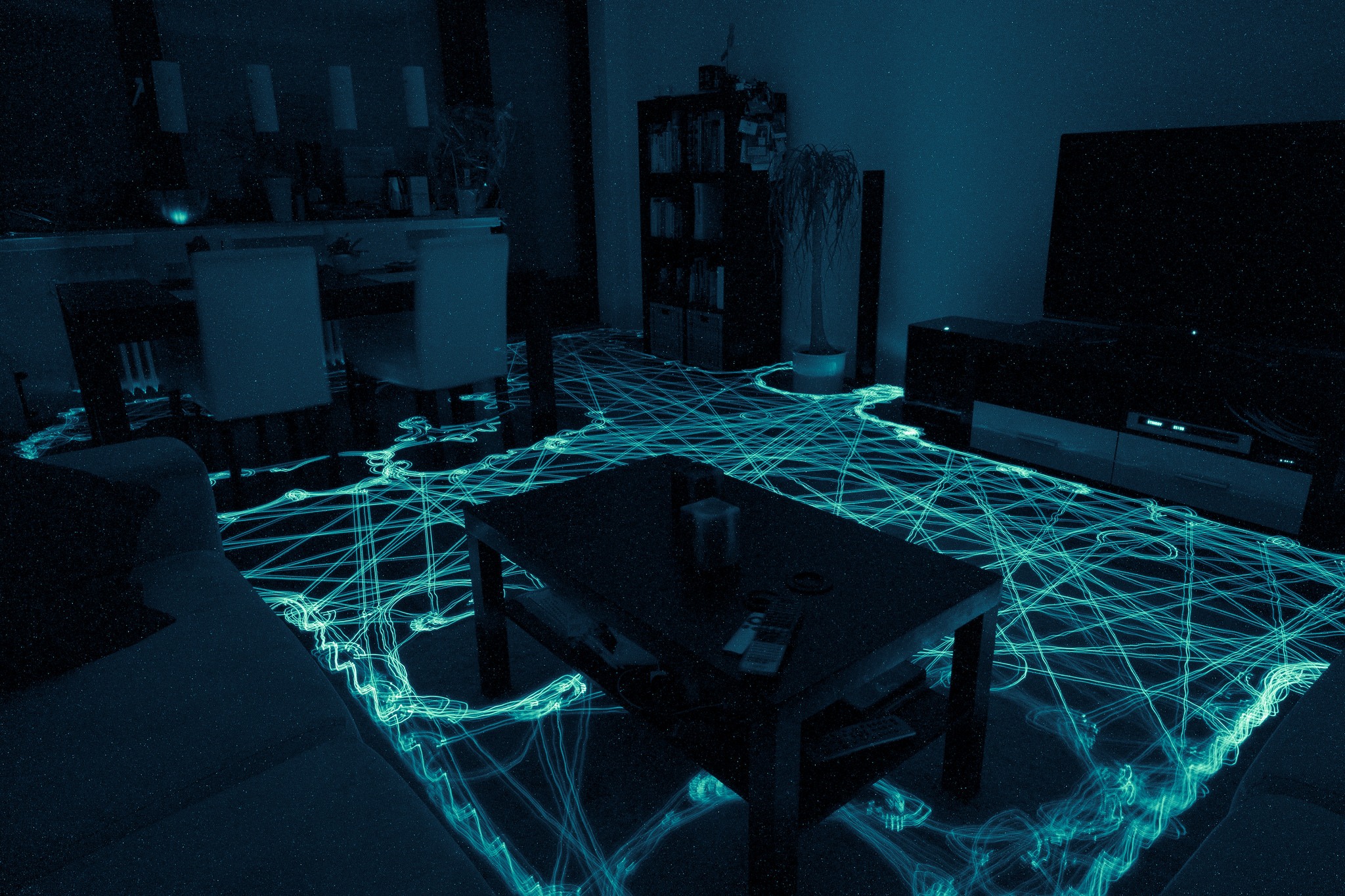
Original Roomba – The first models of Roomba Intelligent FloorVacs utilized an inside-out spiral cleaning pattern. When the vacuum reached the end of the pattern, it would move to a new spot on the floor and initiate a new spiral. The robot included a wall following algorithm which, with the side brushes included in the Pro and Elite Pro models, allowed the Roomba to clean along baseboards and corners. Additionally, Roomba included bump sensors and stair detection, which prevented damage to the unit from crashing into furniture or falling down stairs.
Modern Roombas – The newer Roomba models have upgraded the bump detection sensors and stair detection, and also include wireless sensor beacons, which allow you to create virtual walls to block off certain areas of your home. The virtual wall feature can be useful to block off children’s rooms, which may have small toys laying about the floor which might cause a blockage to the unit. Current Roomba models utilize a random cleaning pattern and dirt detection for dirtier spots. When the battery is low, Roomba can navigate back to its charging station.
Neato BotVacs – The Neato BotVacs all use laser guided, LIDAR based navigation which map your home into memory. Utilizing this map and the ability to return to its charging base when the battery is low, Neato Botvacs can cover a larger area than most robotic vacuums, and can return to the charging base mid-clean before continuing on through the rest of your home. Neato has implemented an organized, linear cleaning pattern, much like a human would use to vacuum. The pattern is an overlapping, back and forth pattern, covering each section of your home twice before moving on to the next section. The base model does not include corner brushes, but because of the “D” shape of the vacuum, baseboards and corners are easily accessible. Upgraded models do include side brush attachments, which provide an even better clean in those areas.
A very detailed video comparing the Roomba vs Neato. Summary: Roombas are easier to maintain, but Neatos are more powerful and efficient at navigation. See more Neato reviews on Amazon.
Suction
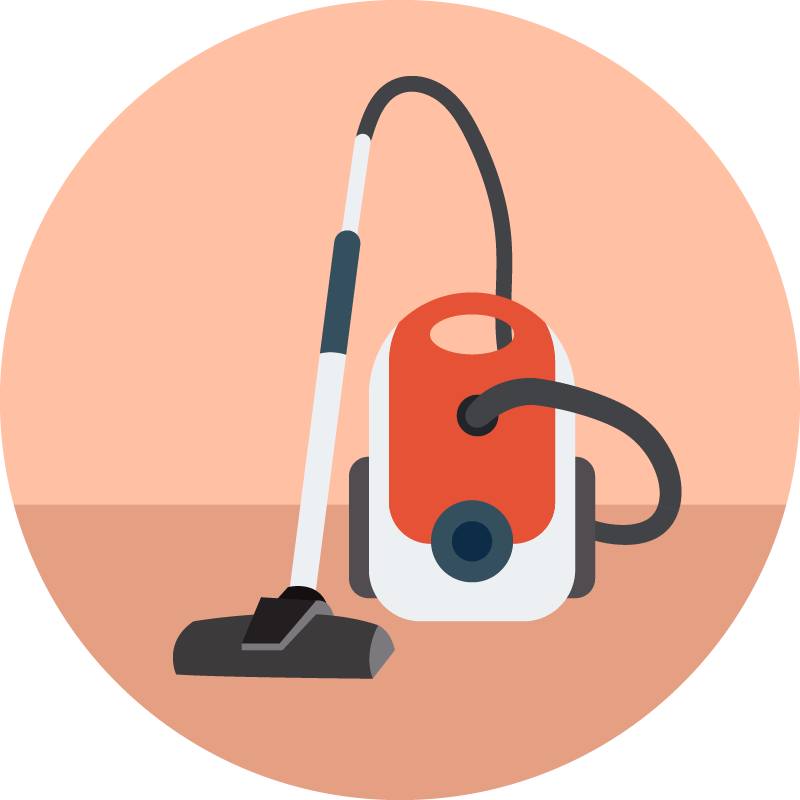
Original Roomba – The early Roomba models included rotating brushes and high efficiency vacuum motors, and current mid-range models utilize the same features. If you took a look at the underside of a traditional vacuum, you would find a similar setup on these Roombas. The brushes work to agitate your carpet, freeing dust and debris from the material, and the vacuum motor sucks up the waste from the carpet. Each newer Roomba model upgraded these features incrementally – more suction power in this model, or a new brush design in that model.
Modern Roombas – Current Roomba models have completely revamped the vacuum setup. Instead of rotating agitator brushes, iRobot created what they call the AeroForce Cleaning System. Replacing traditional brushes with a rubber treads and a higher power vacuum motor, Roomba FloorVacs lower the chances of clogging your unit. As the debris is lifted off the carpet, the counter-rotating rubber treads literally pummel hair and dirt into submission, breaking them up into smaller particles.
Neato BotVacs – Neato has stuck with the more traditional vacuum cleaner method, with a main rotating brush and high powered vacuum motor. The brush is interchangeable – you can use a rubber/brush based setup, which is highly efficient on hardwood floors; or you can use a rubber, beater type setup, which is highly capable on carpet.
Verdict – Neato has the stronger suction power in our tests. Big clumps of hair are routinely found in the dust bin, and we’ve even found pennies in ours. However, the current Roomba vacuums supposedly boast a 500% increase in suction power from their older models. iRobot’s rubber rollers work well, and because of the rubber treads breaking up debris, less suction is actually required to provide a decent floor cleaning.
Battery
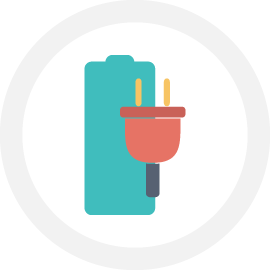
Original Roomba – All the reviews we’ve ever seen for these guys, the battery always came up. While the Roomba was advertised as having a 90 minute battery life, this was affected by floor type. On hardwood floors, you could expect somewhere close to that length of time, but when you started to throw carpet into the mix, that number would drop. And probably the biggest issue consumers had was the twelve hour charge time.
Modern Roombas – This generation’s Roombas feature a two hour cleaning time, a quick recharge time of about two hours, and the ability to schedule your cleans. The new Roombas are intelligent enough to return to the charging station during a clean, and the high-end models can continue cleaning after a recharge. The AeroForce Cleaning System is more efficient on carpet than the older models, which means less power is used, and less battery life is drained. Additionally, upgraded models include an Eco mode, which gives less power to the vacuum motor, saving battery.
Neato BotVacs – The Neato Botvacs charge in two to three hours, and, depending on whether using Eco Mode (a quieter, lower power cleaning mode) or Turbo Mode (with increased suction), can run for up to two hours. BotVacs are all intelligent enough to return to the charging station mid-clean and resume cleaning upon full recharge. Again, when vacuuming carpet, expect battery life to be a little lower.
Verdict – Between the modern Roombas models and the Neato Botvacs, there is really no difference in battery life. The main difference we feel we need to point out is only the higher-end Roombas include the auto-resume feature after charging mid-clean, wheras the Neatos include the feature by default. This might be something to keep in mind if you have a larger area to clean; with a Roomba you might need multiple units or the higher-end model.
Sound

Original Roomba – The first generation Roombas sounded like a radio controlled car that had a small vacuum motor attached. Compared to a full size vacuum, these robots were an annoyance. While they were not “loud,” they were definitely noticeable from the next room.
Modern Roombas – The Aeroforce Cleaning System has two particular modes of operation. The first is a carpet treatment mode, in which the Roomba runs its program without the vacuum on. The second mode is the standard cleaning mode with the vacuum motor operational. You can definitely tell the difference when the vacuum motor is operational and when it is not, and in normal operation, it is much quitter than a traditional vacuum cleaner. Roomba’s Eco mode brings a noticeable difference in loudness – less power to the vacuum motor means a quieter vacuum experience.
Neato – Neato BotVacs sound like a vacuum cleaner. While only the Roomba 980 reaches decibel levels comparable to a small vacuum cleaner, all Neato vacuums are loud. On the upgraded BotVac Connected model, however, Neato has included an Eco mode, which reduces power to the vacuum motor, and decreases noise. In both the Roomba and Neato Eco modes, we would say watching TV while the vacuum is running is possible with minimal volume increase on your TV set.
Verdict – The Neato sounds like a full upright vacuum, while the Roomba is appreciably quieter than that. However, both brands will most likely wake up a sleeping person, unless they are heavy sleepers. While the Roomba 880 series is a bit quieter than the 980 series, both can be heard in other rooms of your home. Likewise, the Neato Botvacs all sound powerful. In Eco mode, both the Roomba and Neato sound similar, quiet enough to watch TV in the same room.
Efficiency

Original Roomba – The older Roombas used a spiral pattern with wall following algorithms to clean. This ensured a nearly complete cleaning coverage radius… theoretically. With no mapping capabilities, the units would calculate the size of your room based on travel distance and adjust as necessary. This led to certain areas of your home being cleaned more thoroughly than others, even if the spiral pattern did operate as programmed.
Modern Roombas – New Roombas use a random pattern to clean your home. While iRobot has included what they call dirt detection, we still don’t know how our Roomba is detecting a dirtier area of our home. Frequently, we will see our Roomba vacuuming the same spot for up to ten minutes at a time, while a clump of pet hair is five feet away. Now, that’s not to say our Roomba doesn’t clean our entire home – because it does, but it requires multiple sessions to do so. And, the AeroForce Cleaning System operates much more efficiently on our floors than other vacuums because it doesn’t use traditional brushes – meaning our Roomba can make more passes on our floors with less recharges and less (almost no) clogging. In about an hour, our Roomba covers just under 1000 square feet on a single charge.
Neato – We love the linear cleaning pattern on our Neato. It leaves vacuum lines on our carpet, so we know it provides full coverage of our home. Because it operates on a standard, double coverage pattern, it usually takes a recharge mid-clean to cover just under 1000 square feet. Depending on your flooring, this could be reduced, as we have deep carpet and pets. And, depending on your debris situation, the Neato BotVacs may require mid-clean maintenance to unclog the brushes.
Verdict – This used to be a toss-up. The Roomba and the Neato have difference strengths. We prefer to use the Roomba on our dog-hair ridden carpet, because the rubber rollers require less frequent (and much easier) maintenance. On the other hand, even though the traditional brush system gets clogged more frequently during cleaning, the Neato provides more coverage because we can see exactly where it has been, as it leaves those coveted vacuum lines in our carpet. On hardwood floors with no pets, both vacuums would perform exceptionally well.
Note that since they came out, 900 series Roombas (like the 960 and 980 discussed here) combine the best of both brands, with the “Roomba” rubber rollers and the “Neato” linear vacuuming paths.
Maintenance
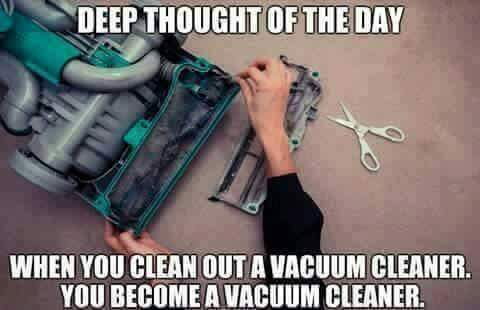
Original Roomba – Operating with traditional brushes, the original Roombas required frequent maintenance, especially when picking up pet hair. Just as in traditional vacuums, brushes can get clogged. While removing a brush to remove tangled hair was easy, having to remove a brush mid-clean was a pain. The dust collection bin was small and required emptying after every program, but easily accessible, and cleaning the air filter was as easy as tapping it against the side of your trashcan.
Modern Roombas – The newer Roomba models require less maintenance overall. The dust bin collectors are large, and right on the front of the unit, and can go through a couple cleaning programs before being emptied. The air filter is right there in the dust bin, and can be cleaned by tapping the filter against your trashcan. What really stands out are the rubber treads which replace the traditional brushes – these things just keep going. Even with pet hair wrapped around them, they still spin and break up debris. The side brushes do occasionally cause the unit to stop cleaning; but after untangling whatever locked the brush up, the Roomba starts right back up again.
Neato BotVacs – What could possibly make you want to buy a Roomba when you have a Neato? The brushes getting tangled. We switched to the rubber beater style brush from the combo brush because our Neato could not get through a single cleaning without getting stuck. Again, we run the Neato on carpet and have a beautiful (long hair) dog, but man, it is so frustrating to have to monitor your robotic vacuum during a cleaning cycle. And there are just so many places for hair to get tangled in the Neato: the brush, the brush bearings, the wheels, the motor belt… routine maintenance was a regular chore.
Verdict – OK, we know it sounds like the Neato sucks, but in all reality, your situation might be different than ours. As mentioned, we have deep carpeting and long dog hair clogging ours up, but you may have hardwood floors and no pets. You will have to perform routine maintenance on both the Roomba and the Neato, but the Roomba’s design is almost as close to hands-off as you are going to find in a robotic vacuum.
Price

Original Roomba – If you are working with hardwood flooring or short pile carpet, the original Roomba can be found on auction sites for pretty darn cheap — think under $100. One thing to note, however, is they are most likely used models and long out of warranty. If you are handy with hand tools, you can still find parts for these original models and there are some video guides online that show how to repair the Roombas.
Modern Roombas – While there are a few different models on the current market, Roomba is expensive. There are a couple options below $500, one with the Aeroforce 3 Cleaning System, and one with wifi connectivity and smartphone app. To get all the bells and whistles, and the multi-room charge and clean feature, be prepared to spend almost double that.
Neato – This is where we feel the Neato line of robotic vacuums really shines. When comparing Neato models with similar Roomba counterparts, Neato is cheaper. Neato offers two models below the $500 price point, and the most expensive model comes in at just a couple hundred dollars more.
Verdict – If you’re on a budget, the Neato is clearly the way to go. However, after using both vacuums in our house regularly, we’ve grown fonder of the Roomba because they are so much easier to maintain. Our budget took a hit when we purchased it, but every time I’m performing robotic maid service on the Neato, I don’t feel so bad about spending a couple hundred extra dollars on the Roomba.
Households with Pets

Original Roomba – We cannot recommend buying a used Roomba Intelligent Floorvac if you have pets. The suction power is just not enough to get all the hair up off the floor, and these little guys get clogged quite frequently. Additionally, the dust collection bins are not very large and fill up pretty fast. Spend some extra cash on the newer models, you’ll be glad you did.
Modern Roombas – The standard cleaning system on the lower end Roomba robotic vacuums has suction power to pick up pet hair, but the brush system tends to get clogged, especially if your pet has long hair. The newer Roombas, however, works very well picking up pet hair due to the rubber treads breaking apart pet hair. One caveat, however, is longer pet hair will sometimes be pummeled into large hair balls, and sometimes won’t be sucked up by the Roomba. An everyday cleaning schedule helps to alleviate this issue.
Neato – The Neato picks up a crazy amount of pet hair. Neato manufactures a robotic vacuum model specifically aimed towards people with pets. The D80/85 includes a larger dust bin, a combo brush designed for picking up pet hair, and an improved filter for trapping dust and allergens. We have found, however, the basic rubber spiral blade brush to get tangled less frequently than the combo brush — but we’ve got a multi-coat dog, so your results may vary.
Verdict – The Neato just picks up more pet hair. The problem is the stoppages due to tangled hair. We have found the Roomba to be less hands on, with very few stoppages, and the Neato to require a bit more supervision. We also use these robotic vacuums on deep pile carpet, which doesn’t help… if you are on hardwood or short pile carpet, you shouldn’t have a problem with either a Roomba or a Neato. Don’t even consider the original Roomba if you have pets.
Households with Kids

Original Roomba – With lower suction power than the newer Roomba models, you might not have to worry about Legos or other small toys getting stuck in your vacuum. Things like shoelaces, socks, or blankets might get caught in the brush, however.
Modern Roombas – In the 1.5 years we’ve had our Roomba, we’ve never seen it get caught on anything. USB cables, power cables, dog treats, all seem to be too big for the rubber treads to sufficiently suck up and rotate. What you might want to look out for, however, are small toys like Legos, which might be small enough to slide between the two treads.
Neato – The Neato will try to pick up anything it rolls over. Shoelaces, socks, toys, cords, cables… anything. Sometimes it works, and sometimes the brush gets tangled. Make sure to do a sweep of the area before letting a Neato robotic vacuum run a cleaning program.
Verdict – Really, best practices dictate picking up anything you don’t want your robotic vacuum to suck up, just like a traditional vacuum. But for the “set-it-and-forget-it” crowd, new Roombas with their rubber rollers are probably the best bet in the category of vacuuming with objects left on the floor.
Large Homes

Original Roomba – With lower battery life, an original Roomba model is probably not going to clean your entire home. For the low price, however, you might think about buying multiple robots and setting them up in different rooms.
Modern Roombas – With the newer Roomba models, entire home cleaning is an additional feature that comes at a premium price. The 900 series have charge and resume features and also carry larger capacity batteries. On the lower end current Roomba models, finding a central location in your home to place the charging station can “extend” your cleaning coverage, so even if you don’t choose a model with the whole home feature, you can still get a thorough cleaning.
Neato – The Neato robotic vacuums all include charge and resume cleaning. To get a whole home clean, placing the charging station in a central location can ensure the laser mapping system can navigate a larger area and return to get a charge mid-clean. We have found the laser mapping system to be more efficient in covering a large area than the Roomba navigation system.
Verdict – The Neato is better in this area. If you would like to go with iRobot, 900 series Roombas are just as good, but more expensive. Outside of those models, however, anything more than a one bedroom apartment will definitely need multiple robot units to get a large home clean.
Carpet
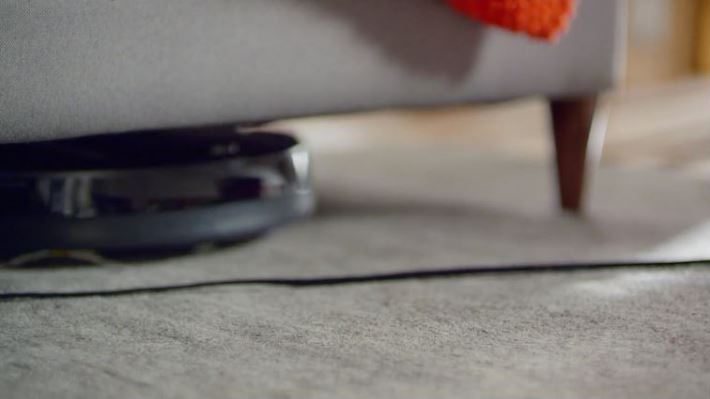
Original Roomba – On short pile carpet, the original Roombas perform admirably. But, because of the short battery capacity, the extra energy needed to traverse carpet did run down the battery at an accelerated rate. Unless the unit is going to be used in one room, we do not recommend buying one of these used units.
Modern Roombas – On the lower end current Roombas, anything other than short throw carpet is going to relegate these guys to single room applications. The combination of the brush system and no charge and resume feature means once the battery runs out, wherever the unit is, that is where the cleaning stops. The models with brushless rubber rollers (model 860 and up) work much better on deeper pile carpet, because there is no brush providing friction and eating up battery life. If you take the dive and get the top-end model, the added charge and resume feature cleans deeper carpet much more thoroughly.
Neato – While the Neato robotic vacuums use brushes to agitate your carpet, because they all include a charge and resume feature, your home will get a thorough cleaning. The issue we have noticed, however: on deeper carpet, the brush will sometimes get caught on the carpet. This affects the vacuum anytime the brush goes from a fixed to moving state; i.e. when your cleaning program starts or when the brush is turned off during navigation.
Verdict – The Roomba models with rubber rollers instead of brushes (namely 800 series and 900 series) win this one, hands down. Since there is no brush creating drag, or requiring extra energy to start moving, the battery lasts longer, which means the Roomba can clean more area. On shorter carpet, however, the Neato performs extremely well, so don’t overlook this little robot just because you have carpet.
Hardwood Floors with Area Rugs
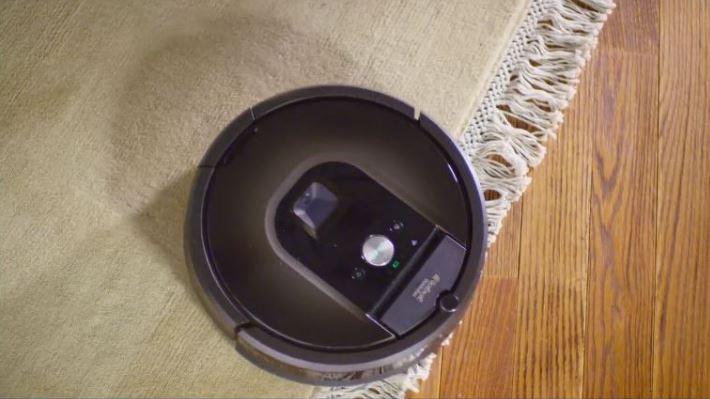
Original Roomba – If you have only hardwood or tile floors, the Roomba Intelligent Floorvac just can’t be beat. You can pick it up for next to nothing, and it will clean your surfaces very well. Once you start throwing area rugs into the mix, however, you will start to have issues. The original Roomba models have issues climbing up onto area rugs and room dividers, so take a look at your floor and take note of any elevation changes before buying these units.
Modern Roombas – iRobot has worked out the kinks in the changing levels with the newer Roomba models. These guys can traverse from hardwood to carpet, tile to hardwood, or hard surface to area rug. A modern Roombas is able to handle it all types of home floors.
Neato – Just like the modern Roombas models, the Neato robotic vacuums have no issue climbing onto an area rug from hardwood. The Neato features extremely large, spring loaded wheels that adjust to floor surfaces. Our kitchen is hardwood and leads into a deep pile carpet with a quick elevation change, and our Neato handles it swimmingly.
Verdict – On just hardwood or tile, any robotic vacuum will work very well. If you have area rugs or elevation changes, the newer robotic vacuum models can handle the jump; but the older Roombas cannot. Before making your decision, be sure to take a look at all the floor areas you want your robotic vacuum to clean to make sure the model you want can handle the job.
iRobot
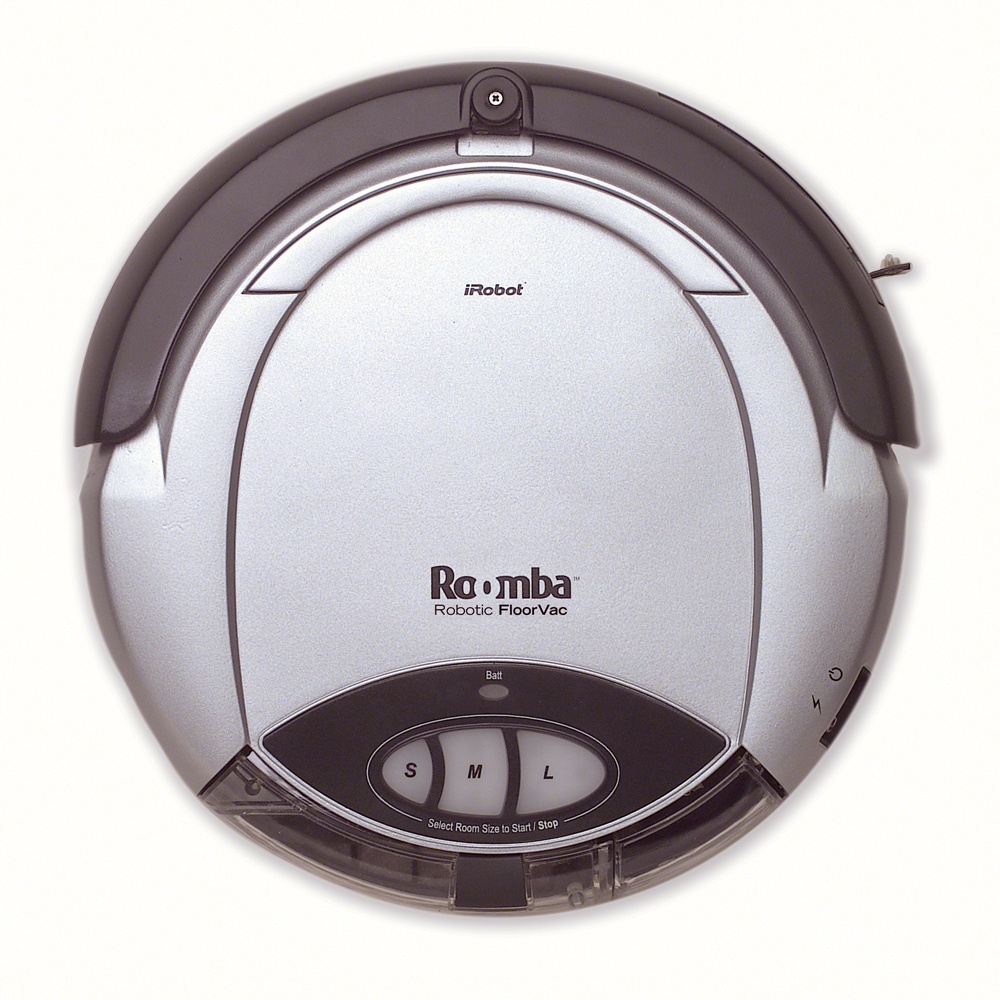
An MIT startup, iRobot began by producing defense robots under a DARPA contract. These first-generation robots could be outfitted with a number of features such as explosive disposal kits, hazardous material sample collection kits, and acoustic analysis and triangulation kits for gunshot detection. These little machines saw quite a bit of action in both Iraq and Afghanistan to aid military forces in all types of operations, and were used in the cleanup efforts of the World Trade Center after the September 11th attacks. As if that weren’t enough, iRobot also worked with NASA, deploying robots in various space missions, like the Mars rover expeditions.
Branching out into consumer markets in 2002, iRobot first created the Roomba, Roomba Pro, and Roomba Elite Pro. Available in high-end electronics retailer catalogs like Brookstone, Sharper Image and Hammacher Schlemmer, the Roomba Intelligent FloorVac had a modest price tag of just under $200, making home robotics affordable to would-be housekeepers of all income brackets.
The first models included high efficiency particle vacuums and cleaning brushes, with the Pro and Elite Pro models including additional features like side brushes and squeegees to increase cleaning power. All models included stair detection, and they utilized a spiral cleaning pattern and wall following algorithm to ensure maximum cleaning coverage.
iRobot would continue to produce disc-shaped upgraded models through the years leading up to today, including floor mopping robots and pool cleaning robots. The current generation of robotic vacuums, the 600-900 series, include a more robust AI cleaning system, state-of-the-art vacuum technology, and even wifi connections to allow for manual control via smartphone applications. The Roomba name is now synonymous with vacuuming automation.
Neato Robotics
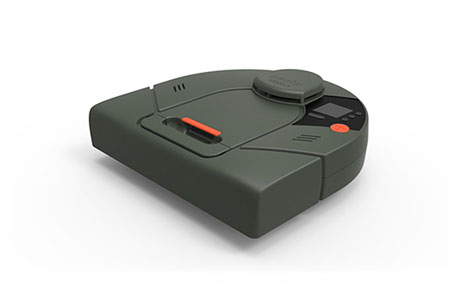
Neato Robotics is a California startup, which began producing robotic floor vacuums for consumer markets in 2010. The concept for the company began at Stanford’s annual Entrepreneur’s Challenge, aiming to create a more powerful robotic vacuum than what was on the market at the time. More akin to a traditional vacuum cleaner than a Roomba, the Neato series of robotic vacuums feature a “D” shaped design, high powered suction, and a laser guided navigation system.
After the first generation of Neato vacuums, later models would add features to the already excellent technology. Upgraded filters could be found in the signature and pet series’, side brush attachments could be found in some models, and wifi connectivity is the key feature in current BotVac Connected models. The “Connected” models include Amazon Alexa and Google Home support. One key feature, although later abandoned, was the ability for the user to update and upgrade the included firmware in the vacuum.
Conclusion
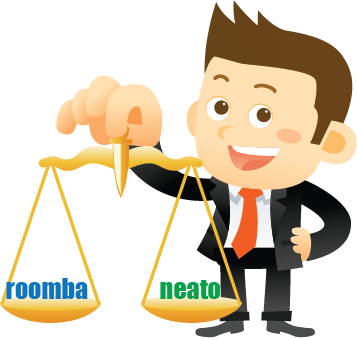
All that information, how do I decide on which brand is right for me?
The most important thing you need to look at is what features are most important for your home:
- If you have multiple surfaces, including area rugs, either brand will be fine.
- If you have deep pile carpet or long dog hair, the Neato models provide a better clean, but require more maintenance.
The bottom line is, robotic technology is an interesting and fun way to increase your quality of life. While we can’t make the decision for you, we can tell you we were impressed with all the modern robotic vacuums we tested, and our pets and deep pile carpet are no match for both our Neato and our Roomba. Whatever you decide, we are pretty confident you won’t be disappointed.
Comparing Specific Models: the Botvac D80 and D85 vs the Roomba 880
Neato Botvac D80/85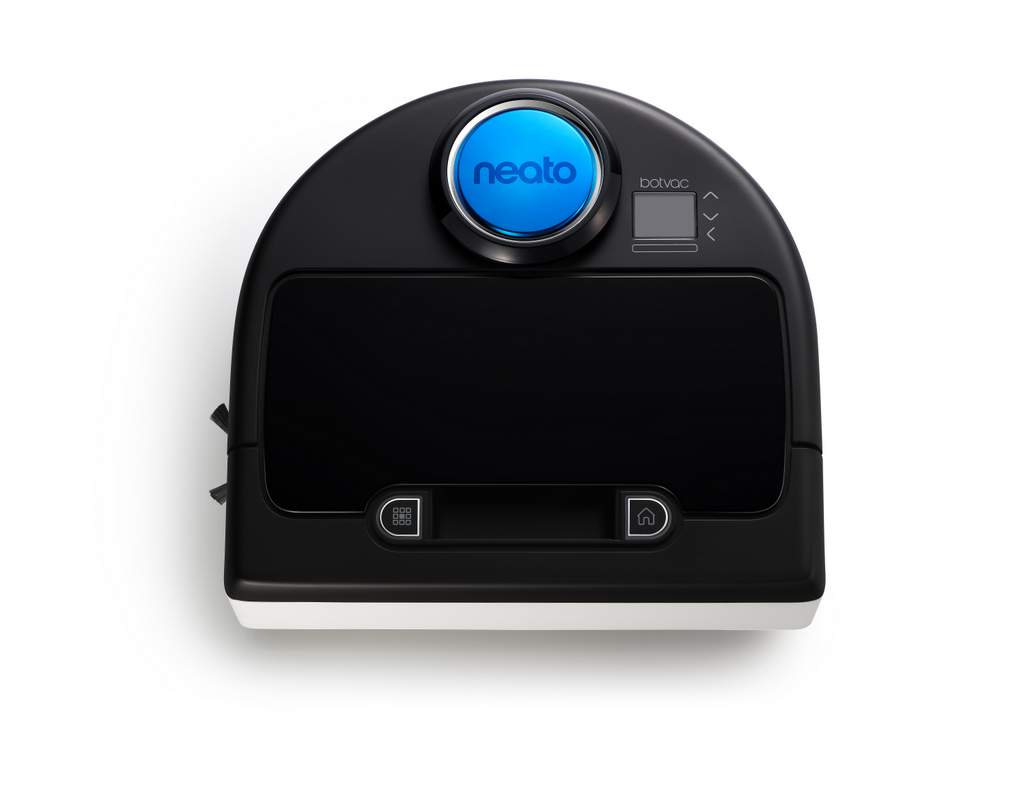
![]()
Quick note: the D80 and D85 are the same robot vacuum, but the D85 comes with extra filters. That’s the ONLY difference!
The Neato D80/85 robotic vacuum series is specifically targeted to pet owners. Coming in the standard “D” shape the Neato vacuums are known for, this little guy sucks! Seriously, though, the Neato D80/85 comes in an attractive black and white finish, with a cool blue branding cover, and an LED indicator panel. Different from the Botvac Connected series is the inclusion of a combo brush perfect for picking up pet hair, a high performance air filter, and a high powered vacuum motor — with more than enough power to get all those hairballs strewn about your floor.
As with the entire Neato line of robotic vacuums, the D80/85 series is equipped with laser navigation, which uses LIDAR to map out your home and determine an efficient cleaning path. And every Neato includes a charge and resume feature, ensuring a thorough cleaning of your home, even if the battery runs out mid program. And when we say thorough, we mean it. The D80/85 series includes a side brush to ensure your baseboards and corners get a clean, too.
Neato D80/85 Pros
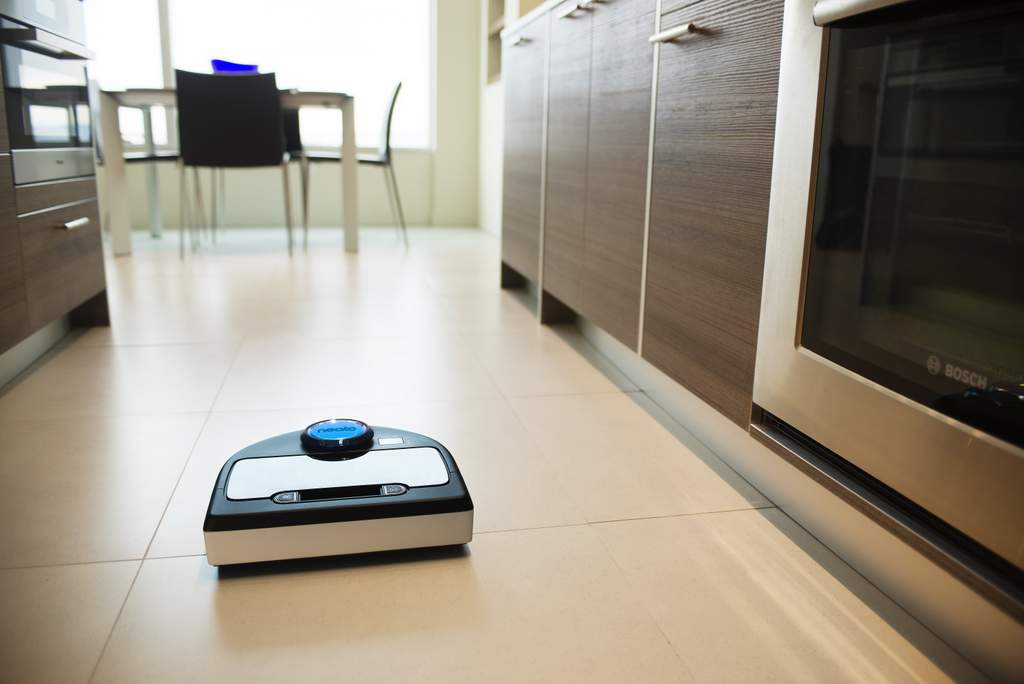
- We absolutely love the laser navigation and cleaning pattern. The Neato line of robotic vacuums leaves lines on your carpet just like a traditional vacuum. You can see where it has been, and it gets everywhere! We have found the Neato D80/85 (and the entire line of Neatos, for that matter), to provide the most thorough house cleaning of any robotic vacuum we have tested.
- The high powered vacuum motor is awesome. For something that sucks this much, we absolutely love it. We have tested on hardwood floors, tile, short pile carpet, and deep pile carpet; the Neato D80/85 handles it all. Our long hair dog likes it too: less hair on the floor means less knots and tangles in her coat.
- Including a charge and resume feature with every Neato model is just smart. In other robotic vacuum lines, this is a premium feature only found in higher end models. Our Neato is able to clean about the area of a one bedroom apartment, with a recharge midway through. Remember, though, the Neato traverses every area in its cleaning path twice, and also overlaps each line it takes.
- The “D” shape of the vacuum gets all the hard-to-reach areas. By producing the Neato vacuums with this signature shape, Neato is able to include a wider brush which gets closer to your baseboards. Additionally, the D80/85 series has a corner brush to agitate dust and debris out of the corners and into the suction path.
Neato D80/85 Cons
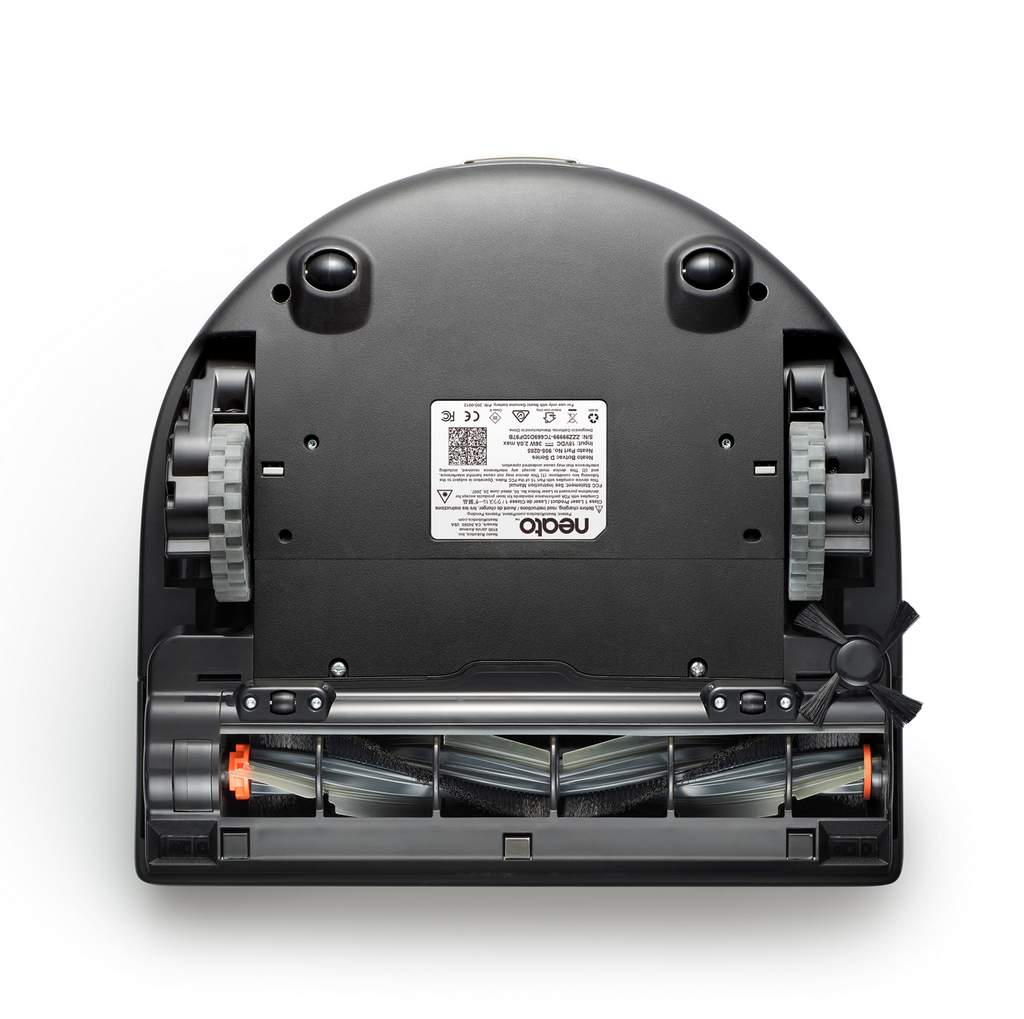
- Pet hair gets tangled in the brushes. If you have a long haired pet, maybe with multiple coats, like we have, the Neato is not as hands-off as you probably want it to be. By using a brush system, long hair and string or shoelaces can wrap themselves around the brush and cause a jam. More frequent maintenance is required with a Neato D80/85.
- The LIDAR navigation system can be a bit finicky. If your couch (ours is a recliner!) is as high, or a little higher off the ground than the height of your Neato, the robot can get stuck. Or even worse, like in the case of our recliner couch, try to climb over the recliner frame for minutes at a time. This can be easily alleviated by placing the included boundary strips under your couch, however.
- eep carpet is a drag. If you have deep carpet, your Neato will get stuck on occasion. Because the D80/85 uses a brush system, deep carpet produces more friction, and the Neato uses more energy to traverse the surface. Sometimes, when the brush isn’t moving — like on startup or during navigation to a different section of your floor — the Neato will have issues turning the brush, and will give you a “Brush Is Stuck” error.
Neato D80/D85 Overall
We love our Neato. While we would like to be able to just set it and forget it, we have both deep carpet and long dog hair for our robot to get stuck on. We still wouldn’t trade this little guy for the world, though. We love the thorough and efficient cleaning pattern, and no other robotic vacuum we have seen picks up as much debris.
iRobot 880
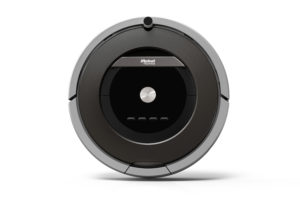
Looking as if a small UFO is running around your carpet, the iRobot Roomba 880 is a stylish black disc. Utilizing a random cleaning pattern and acoustic dirt sensing technology, watching this little guy is sure entertaining.
Featuring the Aeroforce 3 Cleaning System, the Roomba 880 does away with brushes and replaces them with rubber tread extractors. These extractors literally beat dirt into a pulp, and do a good job picking up larger dust bunnies or hairballs. And rightfully so — the Roomba 880 comes in at an advertised 500% increase in suction power compared to previous Roomba vacuums.
While the Roomba 880 does not include a charge and resume feature, it does include beacons to allow the robot to clean rooms in your home which may be out of reach of the base charging station. And the 880 features a high capacity battery, with a run time of about two hours, to ensure the Roomba is able to get a thorough clean of your home.
Roomba 880 Pros
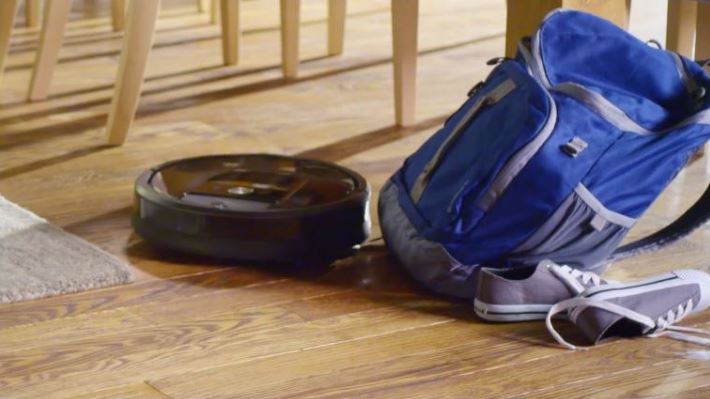
- The Aeroforce 3 Cleaning System is great. Because there are no brushes on the Roomba 880, it handles deep pile carpet very well. And it also handles long pet hair very well. No bristles means hair generally won’t get stuck in the rollers and on the rare occasion that they do, removing the hair is as easy as popping out the rollers and picking the hair out. In fact, the extraction treads do a good job of turning pet hair into dust. And because there is no added friction from the brushes, the battery life remains high, allowing the Roomba 880 to cover a large area.
- The Roomba talks! If an extractor or the side brush does manage to get tangled, the Roomba tells you. Whereas on the Neato, you would have to read the message on the LED screen, the Roomba 880 has a computer voice which reads the message to you. While this is not an “I need this” feature, it definitely ups the cool factor.
- Out of all the robotic vacuums we have tested, the Roomba line with the brushless rubber rollers is the most hands off vacuums on the market. I know we already said the Aeroforce 3 Cleaning System (brushless rollers) was a pro, but it is worth repeating here, simply because the entire point of a robotic vacuum is to not have to deal with a vacuum.
Roomba 880 Cons
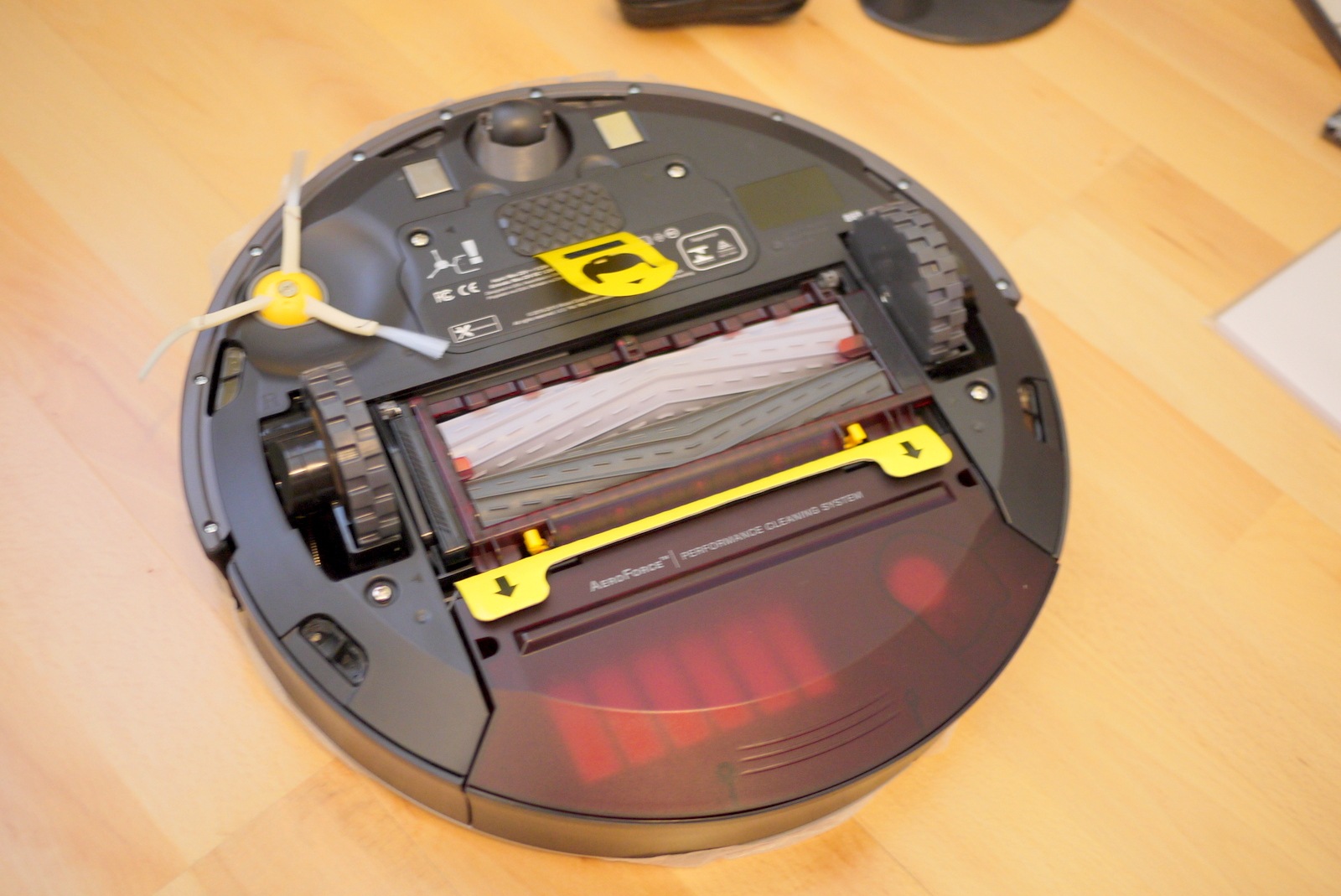
- The “premium” feature cost model. Roomba was the first major robotic vacuum manufacturer, and had been producing robots for the government for a few years before offering consumer products. They have a big name, and you have to pay for it. For a simple feature like charge and resume, be prepared to pony up some more cash on the 900 series of Roomba vacuums.
- The random floor cleaning pattern. The Roomba line of vacuums benefits from the scheduling feature, because unless this thing is cleaning your home everyday, it will not get all the areas of your home — period. We’ve got hairballs on one side of the room and the acoustic dirt sensors don’t seem to find them. The 900 series Roombas do have advanced guidance systems and vacuums the floor linearly like a human would.
Roomba 880 Overall
The Roomba 880 is a beast. It traverses our deep throw carpet with no problems, and does a decent job of picking up our pet hair. While the cleaning pattern leaves much to be desired, we feel the benefit of covering a large area, combined with an everyday cleaning schedule goes a long way to leveling out the pros and cons of this vacuum.
Key Similarities between the Two
- Both the Neato D80/85 and the Roomba excel at picking up pet hair. Though they achieve this through different methods, both models are great for pet owners.
- Both the Neato and the Roomba robotic vacuums cover about the same area in one cleaning program. Both will clean about the size of a one bedroom apartment.
- Both robots work very well on hardwood, tile, and short pile carpet. If these are what your floors are made of, either model will work well for you.
Key Differences between the Two
- The Roomba 880 works slightly better on deep pile carpet. Utilizing an extractor tread system instead of a brush uses less energy, so the battery holds a charge longer.
- The Neato D80/85 vacuums have a higher powered vacuum motor, and pick up more dirt and debris.
- The cleaning patterns. The Roomba 880 is completely random, and will require more than one cleaning cycle to fully clean a home, while the Neato uses a linear, double coverage pattern that gets everything.
- The Neato line of robotic vacuums all offer a charge and resume feature, while only the top end Roombas do.
- The Roomba 880 can theoretically cover more of your home by using the extender beacons, while the Neato D80/85 will require you to place the charging station in a central location.
- The price. Neato just costs less. When you compare the features, it seems as if you’re paying for the name if you buy a Roomba.
Verdict
Get the Roomba 880 for a “hands-off” experience and easy maintenance. Get the Neato D80 or D85 if you care more about squeaky clean floors and don’t mind taking the time to extract hair out of the rotating brushes (or don’t have pets/long hair!)
For more automation goodness, check out our articles on other robotic vacuums.
Click here for all the robot vacuum deals on Amazon today.
Great review. Thanks for so much detail.
Glad you liked the review Jay!
Avoid purchasing a Neato product at any cost! We have had nothing but trouble since purchasing it. At this price point, we expected a quality item that will last years. Instead, we received an item that damaged our furniture, continues to not work as advertised, and needs battery replacement every six months. Concerned that we had received a lemon, we reached out to Neato and the customer service has been unable to help us fix the situation. I highly recommend a product from any other company!
You missed one key feature difference between the two. The way Roomba detects stairs leads to it believing all black flooring or carpet as a hole, while Neato’s Lidar navigation system handles black carpet like a pro.
Hi Kaitlyn,
Thank you for bringing up this difference so that other readers know about it, we will add it to the article!
So please, add it! This is so important. My parents have replaced old carpet in saloon with brand new black one (dark brown with black patterns). I am so dissapointed on Roomba (980) – it is completely lost on such carpets. I didnt know that. Maybe someone is planning to buy new vacuum then your article can help the poor buyer to save his/her money.
Don’t purchase a Neato. We have 2 roombas and 1 Neato. The Neato has been nothing but trouble. Getting them to honor their warranty is a struggle. We have had multiple replacements none have lasted long. So they send another new robot. Now they won’t honor a 1yr warranty on their replacement vacs. The roombas I can replace my own battery and most parts can be ordered and replaced at home.
Thank you for sharing you experience with us Rhonda.
LOVE my Neato! Couldn’t live without it. Perfect for house with pets and kids.
We have owned multiple Neato vacuums, and multiple models. We have tried out so many brands and have come back to Neato over and over again. We’ve purchased and trialed so many different manufacturers including Roomba’s biggest and best. From the noise level of the Roomba (so loud on max suction power that it will drive you out of a room), to the poor cleaning capability of so many of the others, the Neato has been the best of what I would call a very poor choice of technology. Don’t get me wrong, the Neato is NOT a great system. When you purchase one you’ll need to get used to to replacing after it falls apart in 12-24 months. The longevity of these units is terrible. We’ve had many many replaced after just 6 months of service by Neato Customer Service, but they are at times not the easiest CS Department to deal with. This last vacuum was replaced after just 6 months, and the system that replaced it, which was apparently new, is just as bad as the one it replaced. The list of problems are several: getting confused and simply stopping in the middle of the room, laser errors causing frequent service that are very predictable after 9 months of operation, running out of battery power before it can dock to recharge, not being able to work its way out of a position it put itself in, backing itself off stairs. There are others but you get the point. The one thing it does do is clean fairly well, for a robotic vacuum, and with three pets its the reason we have continued to come back to Neato. Until now that is. After having the last vacuum replaced after 6 months, and that replacement just as bad as the first, we’re done with Neato. Right now we’re trying a Shark. I want to trial the Roborok and a couple others. If Neato ever produces a product that lasts more than a couple years before you have to spend hundreds of dollars to replace it again, I’ll look at it then. But for now, I wouldn’t recommend Neato to anyone.
Have you guys noticed any difference with the D-Shaped robot getting stuck and not cleaning along walls.
Our round Ziglent D5 died so we decided to “upgrade” to a D-Shaped Neato D7 Connected. This new robot stands off about an inch or more away from our kitchen cabinets meaning it doesn’t clean the crumbs and dust along the wall.
But even worse, it gets under our kitchen chairs but then cannot get out. The fat square front will always catch a corner on a chair leg and then spin around to try another direction and of course catches another corner on another leg. Rather than feeling its way around the tiny leg. Our round one didn’t seem to have this problem.
I’ve been reading reviews all afternoon trying to find out if this is a known problem with D shaped or if we are just doomed to never having the robot clean under the table….where it really really needs to get a daily sweep.
We have hardwood floors, no rugs, no long hair, and no pets. But we are inundated with dust and such so daily sweepings are a must. Having to run along the walls with a hand-vac kinda defeats the purpose of having a robot floor cleaner.
I’ve had both and hands down the Neato is better!!! Not only does it have more complete coverage but the Roomba would go over spots and not pick anything up!! I have two girls with long hair and two cats. It gets everything!!! The Neato is louder but I would prefer it to actually work than to be a little quieter.